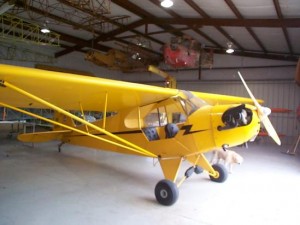1. The DX Century Club Award, with certificate and lapel pin is available to Amateur Radio operators throughout the world (see the DXCC Award Fee Schedule).
ARRL membership is required for DXCC applicants in the US, its possessions, and Puerto Rico. ARRL membership is not required for foreign applicants. All DXCC awards can be endorsed with country totals (see Rule 5).
There are 19 separate DXCC award certificates available, plus the DXCC Honor Roll:
a) Mixed (general type): Contacts may be made using any mode since November 15, 1945.
b) Phone: Contacts must be made using radiotelephone since November 15, 1945. Confirmations for cross-mode contacts for this award must be dated September 30, 1981, or earlier.
c) CW: Contacts must be made using CW since January 1, 1975. Confirmations for cross-mode contacts for this award must be dated September 30, 1981, or earlier. CW contacts dated December 31, 1974, or before, are credited as Mixed mode.
d) Digital: Contacts can include QSOs using any/all digital modes, in any combination (except CW) since November 15, 1945. Digital modes include RTTY, PSK-31, JT65, etc. and any modes that are only machine-readable, and any that use computer sound card technology, with the exception of digital voice, which counts for Phone.
e) 160 Meter: Contacts must be made on 160 meters since November 15, 1945.
f) 80 Meter: Contacts must be made on 80 meters since November 15, 1945.
g) 40 Meter: Contacts must be made on 40 meters since November 15, 1945.
h) 30 Meter: Contacts must be made on 30 meters since November 15, 1945.
i) 20 Meter: Contacts must be made on 20 meters since November 15, 1945.
j) 17 Meter: Contacts must be made on 17 meters since November 15, 1945.
k) 15 Meter: Contacts must be made on 15 meters since November 15, 1945.
l) 12 Meter: Contacts must be made on 12 meters since November 15, 1945.
m) 10 Meter: Contacts must be made on 10 meters since November 15, 1945.
n) 6 Meter: Contacts must be made on 6 meters since November 15, 1945.
o) 2 Meter: Contacts must be made on 2 meters since November 15, 1945.
p) 70 cm contacts must be made on 70 cm since November 15, 1945.
q) Satellite: Contacts must be made using satellites since March 1, 1965. Confirmations must indicate satellite QSO. Satellite contacts do not count toward any awards noted in a) through p) above.
r) Five-Band DXCC (5BDXCC): The 5BDXCC certificate is available for working and confirming 100 current DXCC entities (deleted entities don’t count for this award) on each of the following five bands: 80, 40, 20, 15 and 10 Meters. Contacts are valid from November 15, 1945.
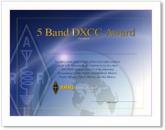
The 5BDXCC is endorsable for these additional bands: 160, 30, 17, 12, 6 and 2 Meters. 5BDXCC qualifiers are eligible for an individually engraved plaque.
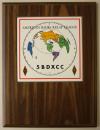
s) The DXCC Challenge Award is available for working and confirming at least
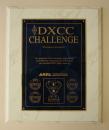 1,000 DXCC band-entities on any Amateur bands, 160 through 6 meters (except 60 meters). Plaques can be endorsed in increments of 500 entities for each band are totaled to give the Challenge standing. Deleted entities do not count for this award. All contacts must be made after November 15, 1945. QSOs for the 160, 80, 40, 30, 20, 17, 15, 12, 10 and 6 meter bands qualify for this award. Confirmations on bands with less than 100 entities are acceptable for credit for this award. Certificates are not available for this award.
1,000 DXCC band-entities on any Amateur bands, 160 through 6 meters (except 60 meters). Plaques can be endorsed in increments of 500 entities for each band are totaled to give the Challenge standing. Deleted entities do not count for this award. All contacts must be made after November 15, 1945. QSOs for the 160, 80, 40, 30, 20, 17, 15, 12, 10 and 6 meter bands qualify for this award. Confirmations on bands with less than 100 entities are acceptable for credit for this award. Certificates are not available for this award.
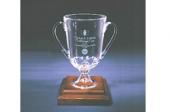
t) The DeSoto Cup is presented to the DXCC Challenge leader as of the 31st of December each year. The DeSoto Cup is named for Clinton B. DeSoto, whose definitive article in October 1935 QST – How to Count Countries Worked A New DX Scoring System, shapes the DXCC award program. Only one cup will be awarded to any single individual. A medal will be presented to a repeat winner in subsequent years. Medals will also be awarded to the second and third place winners each year.
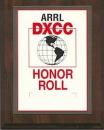
u) Honor Roll: Attaining the DXCC Honor Roll represents the pinnacle of DX achievement:
i) Mixed: To qualify, you must have a total confirmed entity count that places you among the numerical top ten DXCC entities total on the current DXCC List (example: if there are 340 current DXCC entities, you must have at least 331 entities confirmed). Deleted entities do not count towards Honor Roll.
ii) Phone — same as Mixed.
iii) CW — same as Mixed.
iv) Digital — same as Mixed.
To establish the number of DXCC entity credits needed to qualify for the Honor Roll, the maximum possible number of current entities available for credit is published daily onthe ARRL DXCC standings web page. First-time Honor Roll members are recognized daily also on the ARRL DXCC standings web page. Complete Honor Roll standings are published annually in QST. Once recognized on this list, or in a subsequent daily update of new members, you retain your Honor Roll standing until the next standings list is published. In addition, Honor Roll members who have been listed in the previous Honor Roll Listings, or have gained Honor Roll status in a subsequent daily listing, are recognized in the DXCC Annual List. Honor Roll qualifiers receive an Honor Roll endorsement sticker for their DXCC certificate and are eligible for an Honor Roll lapel pin and an Honor Roll plaque. Contact the DXCC Desk for details or check out the Century Club Item Order Form.

v) #1 Honor Roll: To qualify for a Mixed, Phone, CW or Digital, you must have worked every entity on the current DXCC List. There are 340 current entities onThe ARRL DXCC List. Contact the DXCC Desk for details. #1 Honor Roll qualifiers receive a #1 Honor Roll endorsement sticker for their DXCC certificate and are eligible for a #1 Honor Roll plaque and a #1 Honor Roll lapel pin.
2. Written Proof: Except in cases where the rules of Section IV apply, proof of two-way communication (contacts) must be submitted directly to ARRL HQ for all DXCC credits claimed. Photocopies and electronically transmitted confirmations (including, but not limited to fax and e-mail) are not currently acceptable for DXCC purposes. Exception: Confirmations created and delivered by ARRL’s Logbook of the World program are acceptable for DXCC credit.
The use of a current official DXCC application form or an approved facsimile (for example, exactly reproduced by a computer program) is required. Such forms must include provision for listing call signs, dates, bands, modes and DXCC entity names. Complete application materials are available from ARRL HQ. Confirmations for a total of 100 or more different DXCC credits must be included with your first application. Cards contained in the original received envelopes or in albums will be returned at applicant’s expense without processing.
3. The ARRL DXCC List is based on the DXCC List Criteria.
4. Confirmation data for two-way communications must include the call signs of both stations, the entity name as shown in the DXCC List, mode, date, time and band. Except as permitted in Rule 1, cross-mode contacts are not permitted for DXCC credits. Confirmations not containing all required information may be rejected.
5. Endorsement stickers for affixing to certificates or pins will be awarded as additional DXCC credits are granted. For the Mixed, Phone, CW, Digital, 40, 30, 20, 17, 15, 12 and 10-Meter DXCC, stickers are provided in exact multiples of 50 (i.e. 150, 200) etc. between 100 and 250 DXCC credits, in multiples of 25 between 250 and 300, and in multiples of 5 above 300 DXCC credits.
For 160-Meter, 80-Meter, 6-Meter, 2-Meter and Satellite DXCC, the stickers are issued in exact multiples of 25 starting at 125 and in multiples of 10 above 200, and in multiples of 5 between 250 and 300. Confirmations for DXCC credit may be submitted in any increment, but stickers and listings are provided only after a new level has been attained.
6. All contacts must be made with amateur stations working in the authorized amateur bands or with other stations licensed or authorized to work amateurs. Contacts made through “repeater” devices or any other power relay methods (other than satellites for Satellite DXCC) are not valid for DXCC credit.
7. Any Amateur Radio operation should take place only with the complete approval and understanding of appropriate administration officials. In countries where amateurs are licensed in the normal manner, credit may be claimed only for stations using regular government-assigned call signs or portable call signs, where reciprocal agreements exist or the host government has so authorized portable operation. Without documentation supporting the operation of an amateur station, credit will not be allowed for contacts with such stations in any country that has temporarily or permanently closed down Amateur Radio operations by special government edict or policy where amateur licenses were formerly issued in the normal manner. In any case, credit will be given for contacts where adequate evidence of authorization by appropriate authorities exists, notwithstanding any such previous or subsequent edict or policy.
8. All stations contacted must be “land stations.” Contacts with ships and boats, anchored or underway, and airborne aircraft, cannot be counted. For the purposes of this award, remote control operating points must also be land based. Exception: Permanently docked exhibition ships, such as the Queen Mary and other historic ships will be considered land based.
9. All stations must be contacted from the same DXCC entity. The location of any station shall be defined as the location of the transmitter. For the purposes of this award, remote operating points must be located within the same DXCC entity as the transmitter and receiver.
10. All contacts must be made using call signs issued to the same station licensee. Contacts made by an operator other than the licensee must be made from a station owned and usually operated by the licensee, and must be made in accordance with the regulations governing the license grant. Contacts may be made from other stations provided they are personally made by the licensee. The intent of this rule is to prohibit credit for contacts made for you by another operator from another location. You may combine confirmations from several call signs held for credit to one DXCC award, as long as the provisions of Rule 9 are met. Contacts made from club stations using a club call sign may not be used for credit to an individual’s DXCC.
11. All confirmations must be submitted exactly as received by the applicant. The submission of altered, forged, or otherwise invalid confirmations for DXCC credit may result in disqualification of the applicant and forfeiture of any right to DXCC membership. Determinations by the ARRL Awards Committee concerning submissions or disqualification shall be final. The ARRL Awards Committee shall also determine the future eligibility of any DXCC applicant who has ever been barred from DXCC.
12) DXCC Audit Process: In order to maintain continuing program integrity and for quality control purposes, DXCC routinely conducts audits of credits claimed for DXCC awards. To verify the authenticity of the QSOs claimed, audits may be conducted on claims for QSO credits for current applications, or credits already in a DXCC award account. Audits may include, but are not limited to:
- Checking online logs (preliminary check);
- Contacting DX stations for log extracts;
- Contacting QSL managers for log extracts; and
- Verifying credits submitted via Logbook of the World (LoTW)
Audits are generally conducted on a random basis. Response to audit requests to DXCC applicants are required. Failure, or refusal, to respond to these requests may result in removal of the credits requested by DXCC and/or removal of the awards pertaining to the audit. Events may also lead to disqualification from the DXCC program. Costs for postage, by a secure and traceable method to, and from, DXCC will be covered by the ARRL Desk. Audits that reveal discrepancies may lead to an investigation by the Awards Committee.
13. Conduct: Exemplary conduct is expected of all amateur radio operators participating in the DXCC program. Evidence of intentionally disruptive operating practices or inappropriate ethical conduct in any aspect of DXCC participation may lead to disqualification from all participation in the program by action of the ARRL Awards Committee.
Actions that may lead to disqualification include, but are not limited to:
a) The submission of forged or altered confirmations.
b) The presentation of forged or altered documents in support of an operation.
c) Participation in activities that create an unfavorable impression of amateur radio with government authorities. Such activities include malicious attempts to cause disruption or negatively affect the accreditation of an operation.
d) Blatant inequities in confirmation (QSL) procedures. Continued refusal to issue QSLs under certain circumstances may lead to disqualification. Complaints relating to monetary issues involved in QSLing will generally not be considered.
14. Each DXCC applicant, by applying, or submitting documentation, stipulates to:
a) Observing all pertinent governmental regulations for Amateur Radio in the country or countries concerned.
b) Observing all DXCC rules.
c) Being bound by the DXCC rules.
d) Being bound by the decisions of the ARRL Awards Committee.
15. All DXCC applications (for both new awards and endorsements) must include sufficient funds to cover the cost of returning all confirmations (QSL cards) via the method selected. Funds must be in US currency, check or money order payable to the ARRL, or a credit card number with a valid expiration date. Address all correspondence and inquiries relating to DXCC awards and all applications to:
ARRL Headquarters
DXCC Desk
225 Main St.
Newington, CT06111
USA
E-mail to [email protected]
16. Fees: Find the most up-to-date fee schedule.
17. The ARRL DX Advisory Committee (DXAC) requests your comments and suggestions for improving DXCC. Address correspondence to:
ARRL HQ
DXAC
225 Main St.
Newington, CT06111, USA
The DXAC may be contacted directly by e-mail at this linkhttp://www.arrl.org/dxac. Correspondence on routine DXCC matters should be addressed to the DXCC Desk, or by e-mail to [email protected]
Back to top^



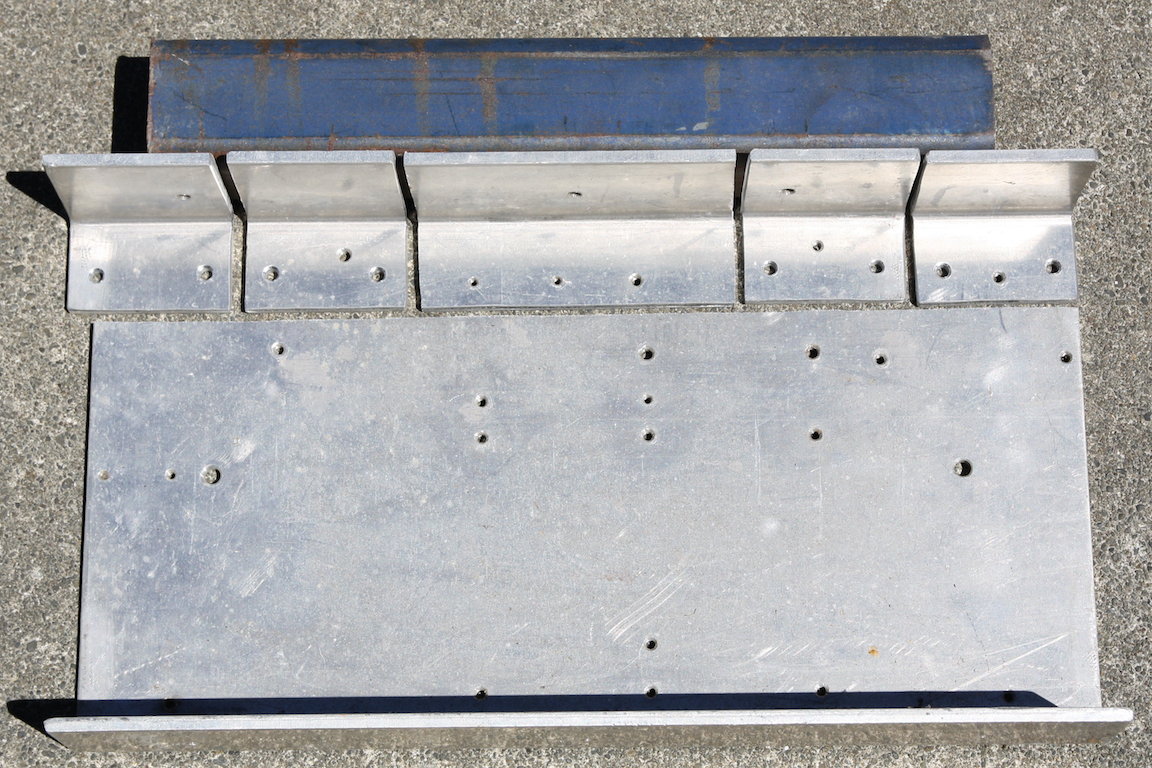
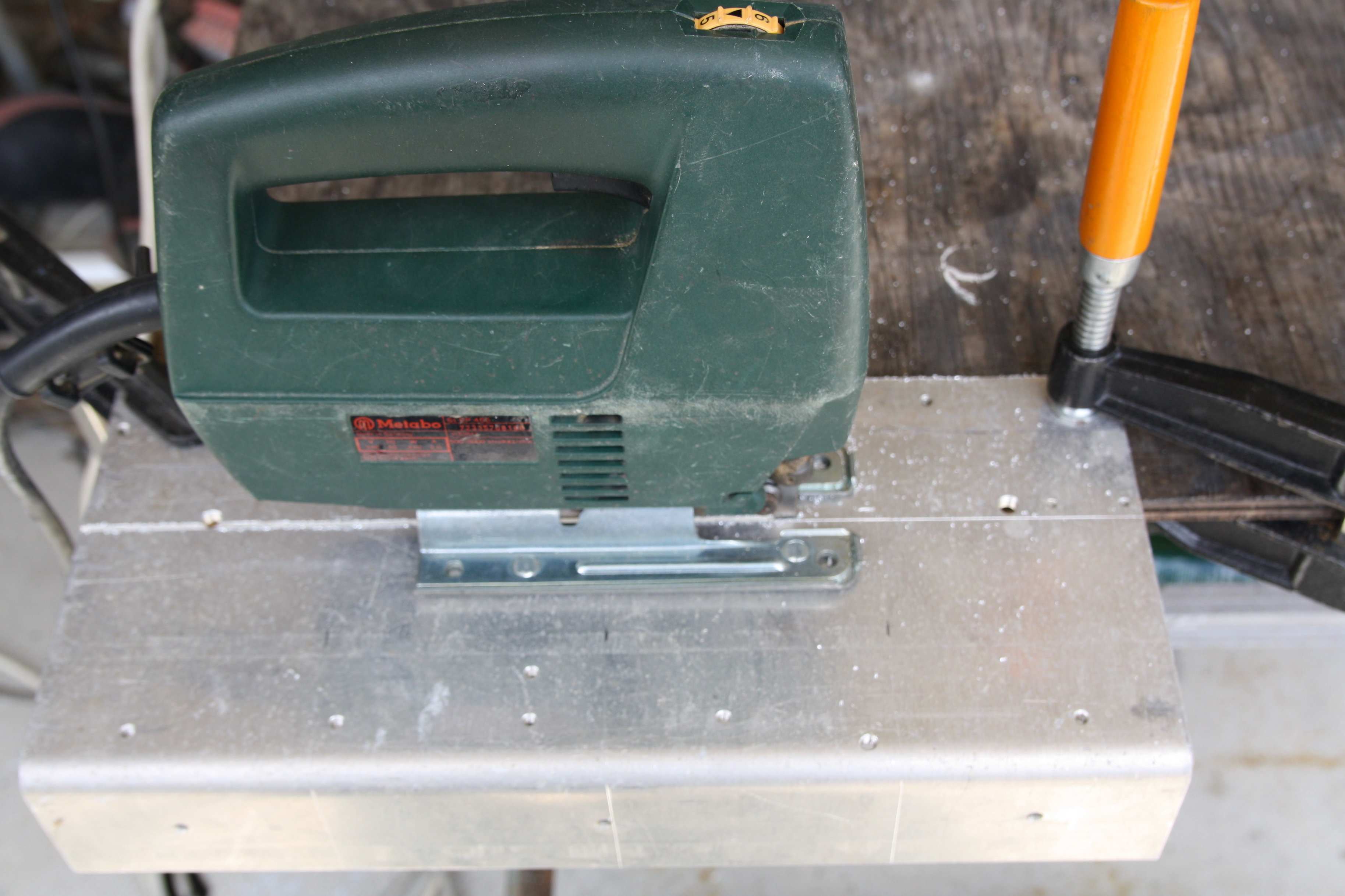
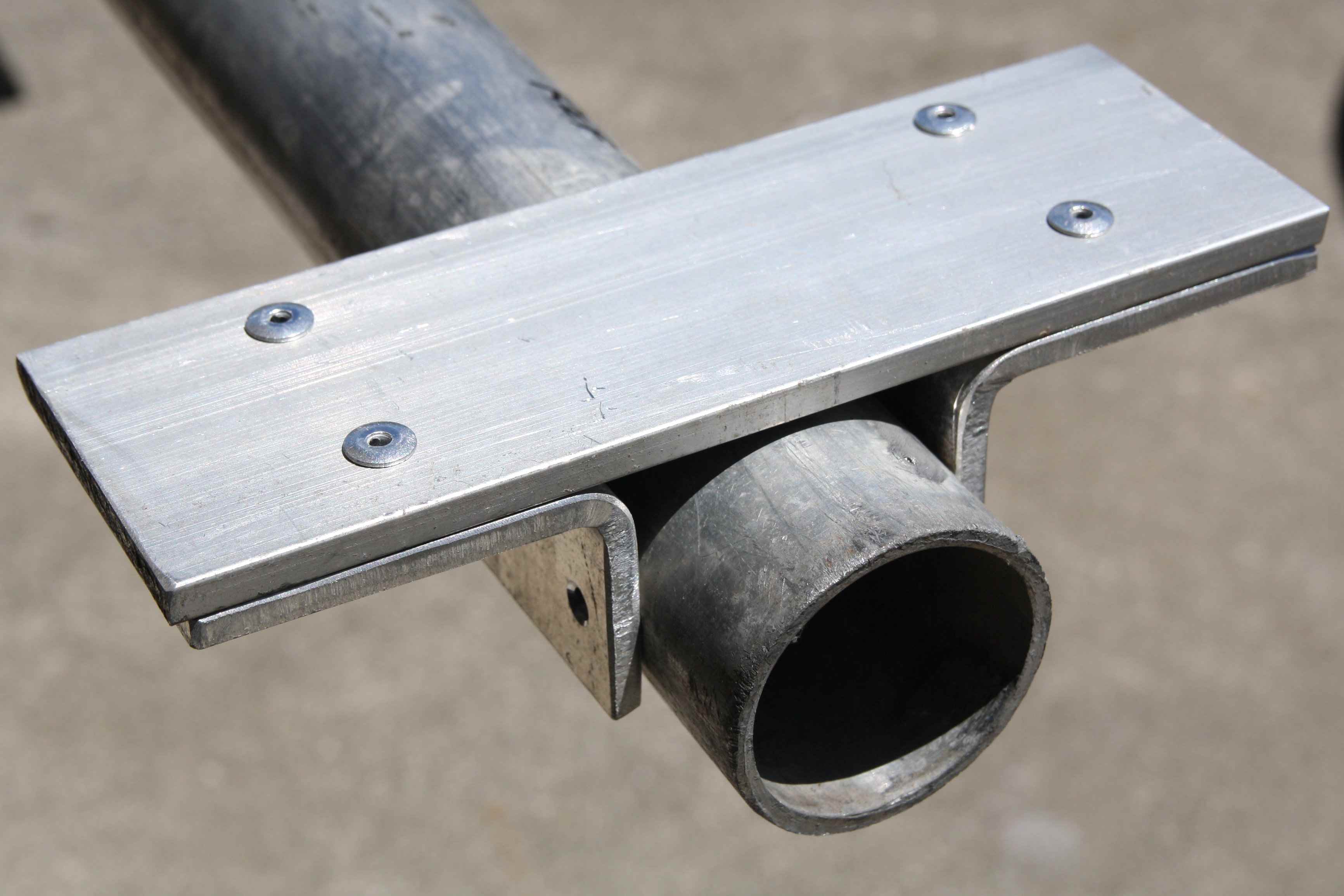






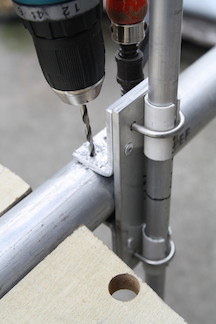

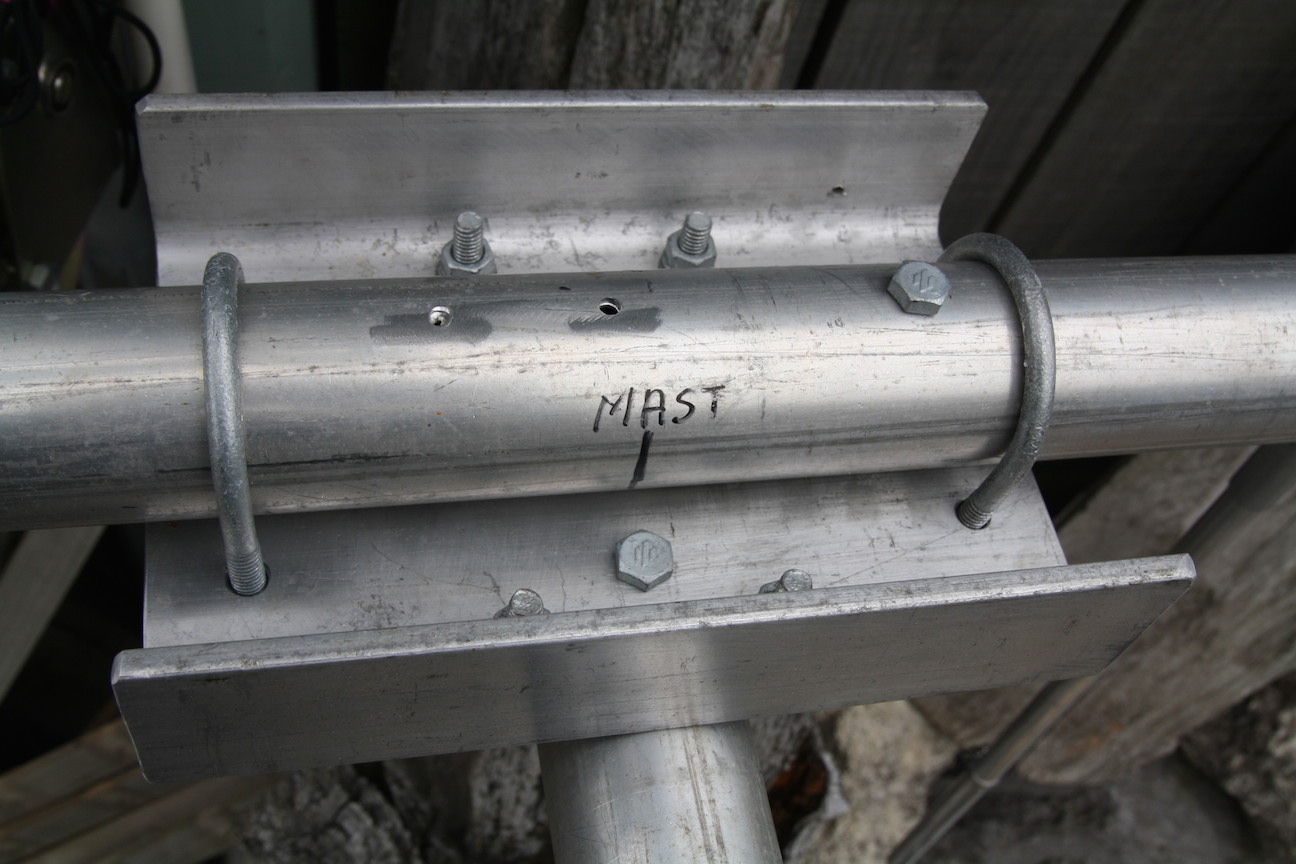



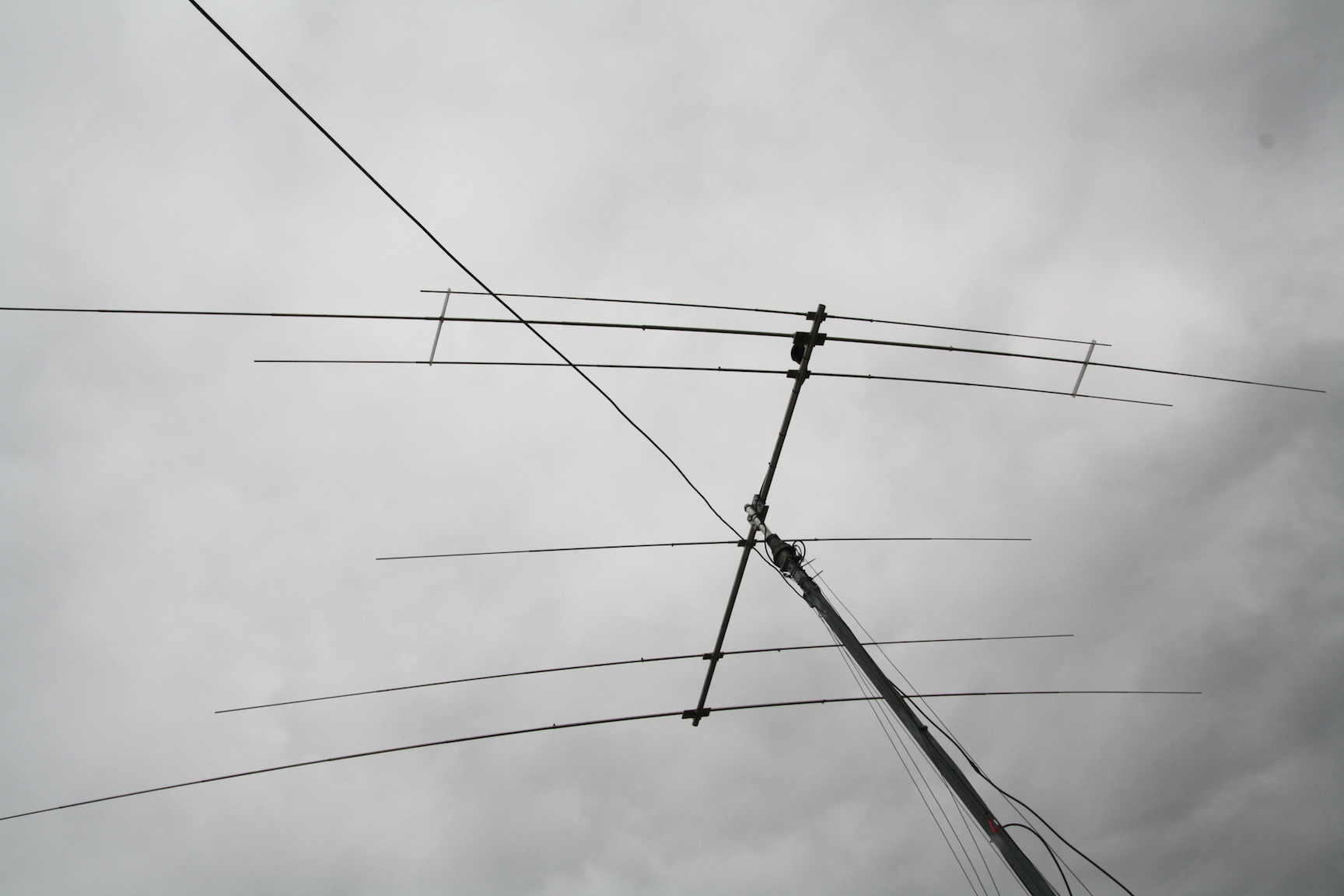
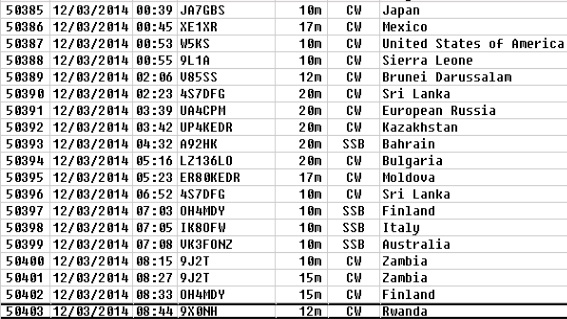

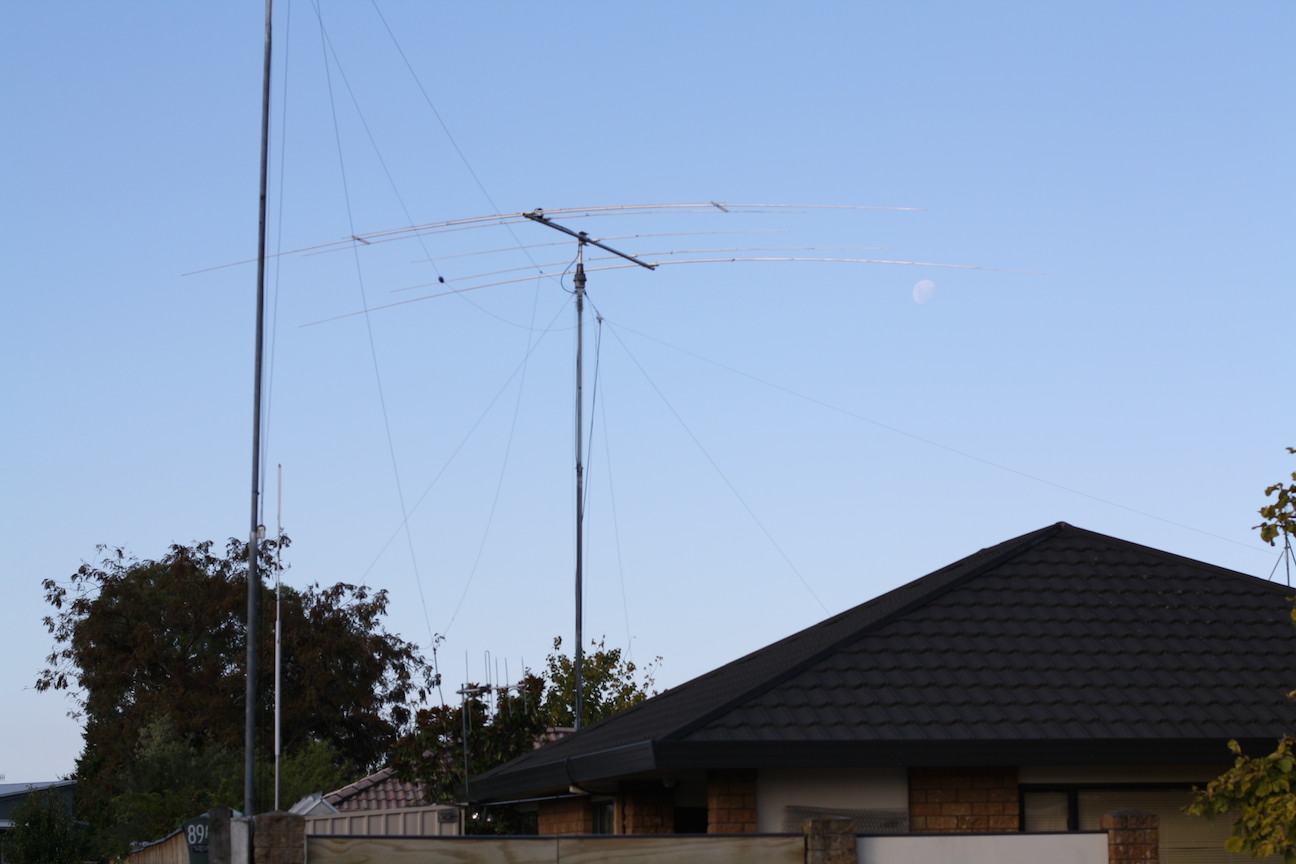


 1,000 DXCC band-entities on any Amateur bands, 160 through 6 meters (except 60 meters). Plaques can be endorsed in increments of 500 entities for each band are totaled to give the Challenge standing. Deleted entities do not count for this award. All contacts must be made after November 15, 1945. QSOs for the 160, 80, 40, 30, 20, 17, 15, 12, 10 and 6 meter bands qualify for this award. Confirmations on bands with less than 100 entities are acceptable for credit for this award. Certificates are not available for this award.
1,000 DXCC band-entities on any Amateur bands, 160 through 6 meters (except 60 meters). Plaques can be endorsed in increments of 500 entities for each band are totaled to give the Challenge standing. Deleted entities do not count for this award. All contacts must be made after November 15, 1945. QSOs for the 160, 80, 40, 30, 20, 17, 15, 12, 10 and 6 meter bands qualify for this award. Confirmations on bands with less than 100 entities are acceptable for credit for this award. Certificates are not available for this award.



